Lord Ganesha
Lord Ganesha, the elephant-headed deity known for having a mouse as his steed, is one of the most commonly known representations of Hinduism. This not only fosters the idea that Ganesha is one of the central deities but also his popularity and omnipresence in the Hindu people. He is among the prime Gods of the Hindus (the others being, Vishnu, Durga, Brahma and Shiva) and is also worshipped as the deity of wisdom, knowledge, and education. Ganesha’s idols are worshipped and honoured in the panchayatana puja.
| Ganesh Chaturthi Cards | ||||
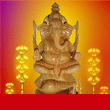 |
 |
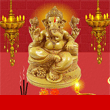 |
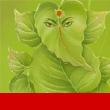 |
 |
| Ganesh Chaturthi | Lord Ganesha | History | Celebration | Date | Gifts |
| Cards | Greetings | SMS | Wallpaper | Pictures | Scraps |
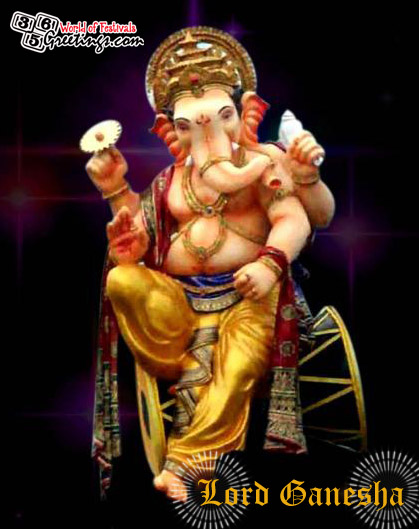
Ganesha: The Lord of Success
Lord Ganesha is the son of Lord Shiva and the incarnation of the Goddess Durga, Parvati. He has a typical elephant’s head with the curved trunk and gigantic ears. His body is that of a pot-bellied human, which is telling of gift he endows unto his devotees. He is the deity of prosperity and success, he is also known as the remover of obstacles from the spiritual path.
Ganesha’s Form
Lord Ganesha’s form represents the two existences of human beings; the Atman or the soul, is the ultimate supreme reality of human existence and this is symbolized by his head. His elephantine head connotes enlightenment while the trunk symbolizes the sound of Om, or cosmic reality. The Maya, the earthly existence of humans, is represented by the God’s body. In Ganesha’s left hand lies a noose which the God uses to ensnare all the difficulties of his devotees.
A goad lies in the upper right hand of the God, he uses this instrument to drive and guide his followers through the path of enlightenment; as well as dismiss every impediment along the way. On his lower right hand Lord Ganesha holds a broken tusk which symbolizes sacrifice because he broke the tusk while writing the Mahabharata. On his last hand he holds a rosary which symbolizes knowledge. It also denotes that the pursuit of knowledge should be eternal or unending.
On his tusk lies a Laddu a form of sweet which tells his devotees that they should pursue and find the sweetness of the Atman. His wide and open ears suggest that he is always ready to hear the prayers of his devotees. On the God’s waist is a snake, wrapping itself around him, it represents perpetual energy and all its forms. As mentioned earlier he rides a mouse, a most unworthy creature, to show his humility.
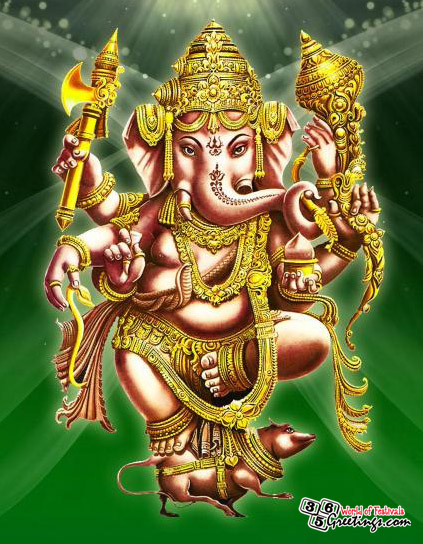
The Elephant Head
One of the most famous legends of how Lord Ganesha came to have his elephant head can be found in the Shiva Purana. As the legend goes, Goddess Parvati required a guard to keep unwanted visitors from entering her house while she bathes. So it came to pass that during one her baths she fashioned a boy out of the clay from her body and made him her guard. When her husband, Lord Shiva, arrived the guard refused him entrance into his own house and in blind rage chopped his head off. Parvati was utterly grieved by his loss. To console her, Shiva sent off his gana in search of a sleeping creature which faced north.
The first animal the squad came across was an elephant and thus beheaded it. Shiva then replaced the head of the boy with that of the elephant and resurrected him. Upon doing so, he named the boy leader or gana of his troop, and so he was named Ganapati. Lord Shiva also granted him godhood making mankind worship him and seek his blessing before beginning any endeavor.
Another legend, although less distinguished, comes from the Brahma VaivartaPurana. Lord Shiva asked his wife to hold a year-long observance punyakavrata, a form of penance, to satisfy the God Vishnu so that they may be granted a son. When a son was born to the couple, all the gods and goddesses of the heavens congregated and celebrated the boy’s birth. The son of the Sun-God Surya, Lord Shani, attended the feast, yet he declined any invitation to look at the boy.
Disturbed by his behavior, Parvati approached him and asked him to explain himself. He then explained how one gaze from him would hurt the newborn child. Parvati however insisted that he see the baby. As soon as his eyes lay on the infant, its head was cleaved off. A great lamentation ensued, consequently Lord Vishnu rushed to the Pushpabhadra river bank and returned with a young elephant’s head. He then joined it with the infant’s neck and resurrected Ganesha.
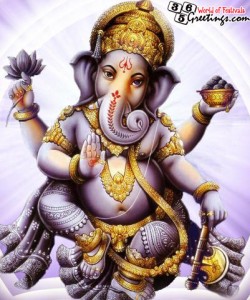
Ganesha, Bane of the Proud
Lord Ganesha personifies the material universe and everything elegant and majestic in it. He destroys pride, vanity and selfishness in his disciples as it impedes them on their path to enlightenment. All Hindus worship him regardless of the sect they belong to. As one of the prime deities he is the middle ground for the different Hindu sects.
Ganesh Chaturthi
The festival that celebrates the birth of Lord Ganesha is known to his devotees, the Ganapatyas, as Ganesh Chaturthi.